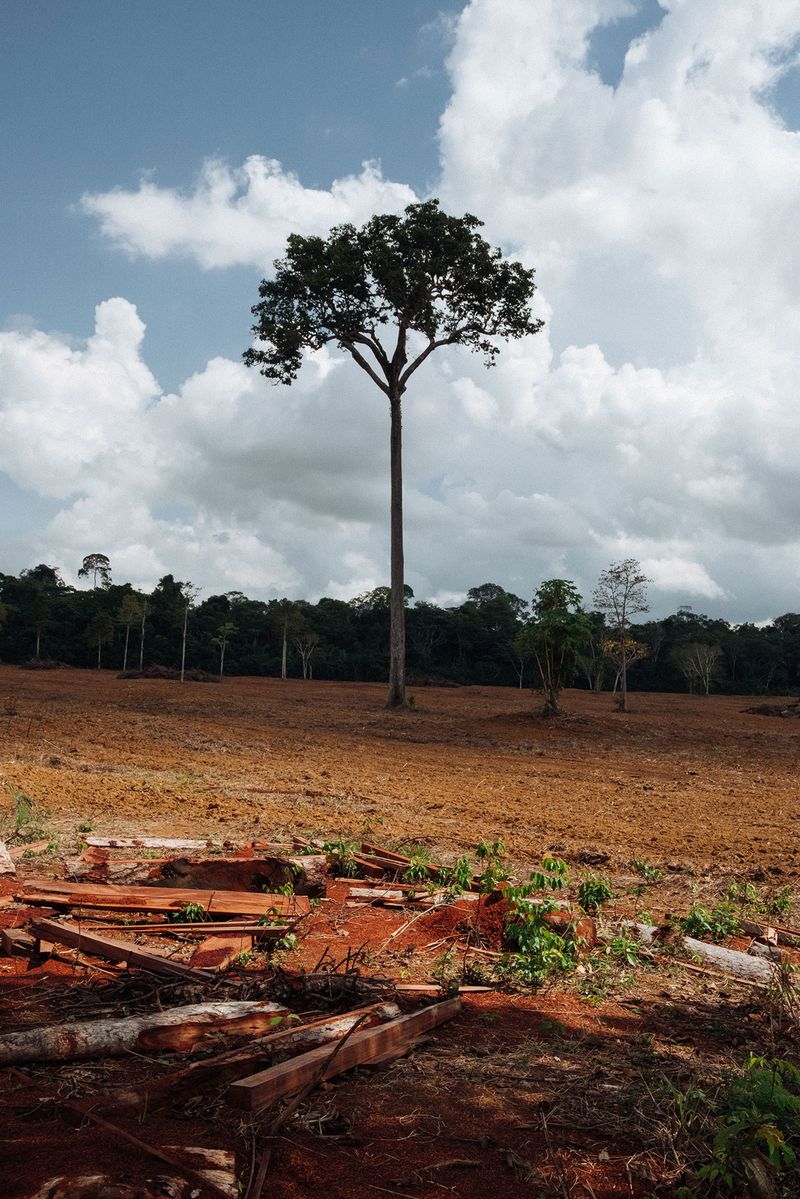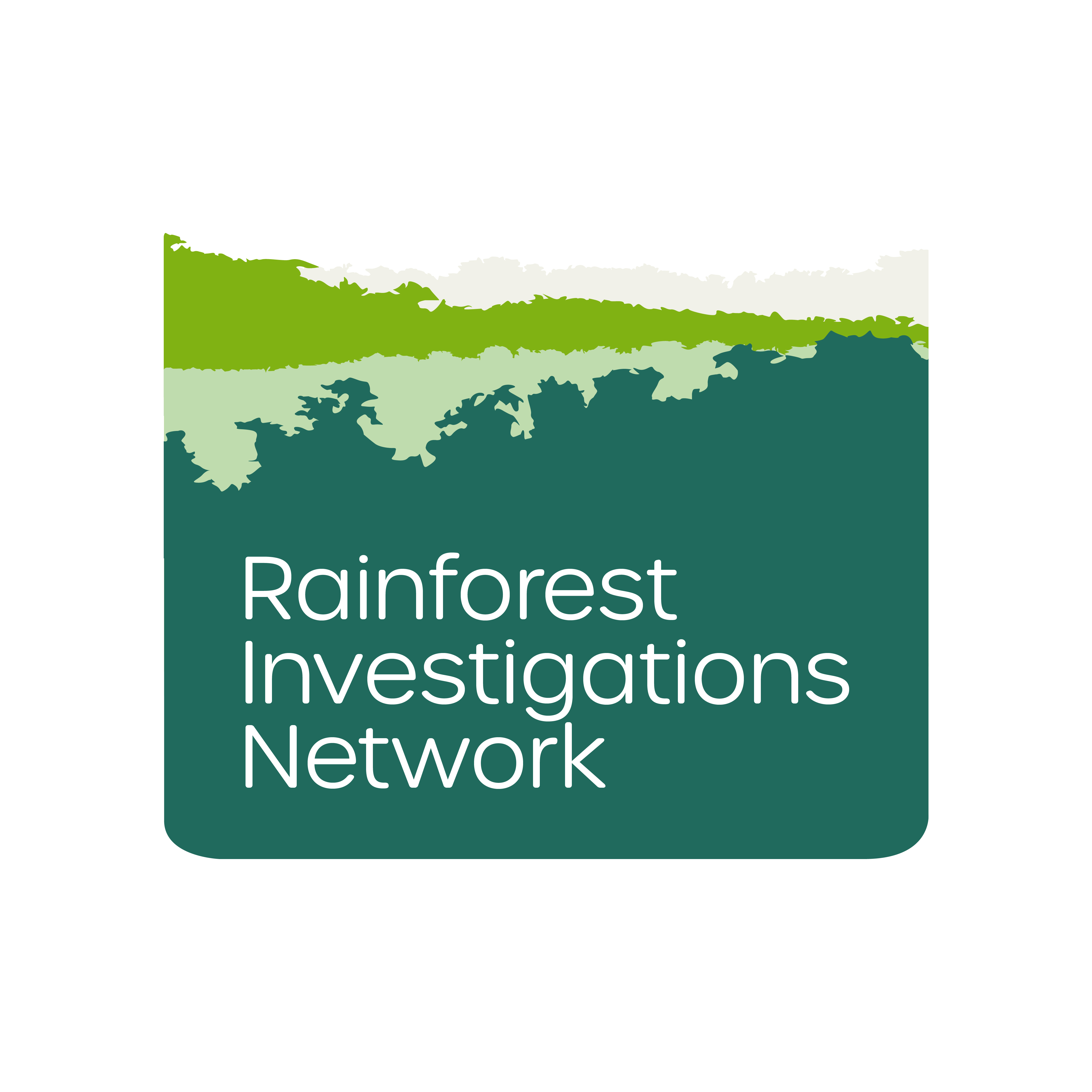This report's data analysis and graphics, by Andre Tartar and Mira Rojanasakul, can be found by clicking here.
São Félix do Xingu is a modern-day Wild West hacked out of Brazil’s Amazon jungle by folks with little to lose. Cattle outnumber people almost 20-to-1 and, after dusk, the cratered, dirt roads fill with big rigs hauling the mammoth trunks of stolen trees. It’s a place outsiders don’t have much reason to visit, where motorcyclists won’t wear helmets because people want to know who is coming and going. Just about everybody knows everybody else, especially Stanisley Ferreira Sandes.
Four months a year, Ferreira Sandes, 47, crisscrosses São Félix’s almost 85,000 square kilometers (33,000 square miles) in a four-by-four Chevrolet with a cowboy hat on the dash and a revolver under the seat. He’s on the hunt for 5,000 head of cattle to feed a pipeline pumping beef through slaughterhouses owned by Brazilian meatpacking giant JBS SA and others, then into markets from Miami to Hong Kong. The faster he hits his mark, the sooner he goes home. But the competition is fierce, the going slow. He visits three ranches a day—four, if he hustles—picking up 23 cows here, 68 there. For buyers like Ferreira Sandes, there’s no better haunt than São Félix do Xingu. At 2.4 million head, it’s home to Brazil’s largest herd. “If what you’re after is cattle,” he says, “you needn’t go anywhere else.”

As a nonprofit journalism organization, we depend on your support to fund journalism covering underreported issues around the world. Donate any amount today to become a Pulitzer Center Champion and receive exclusive benefits!
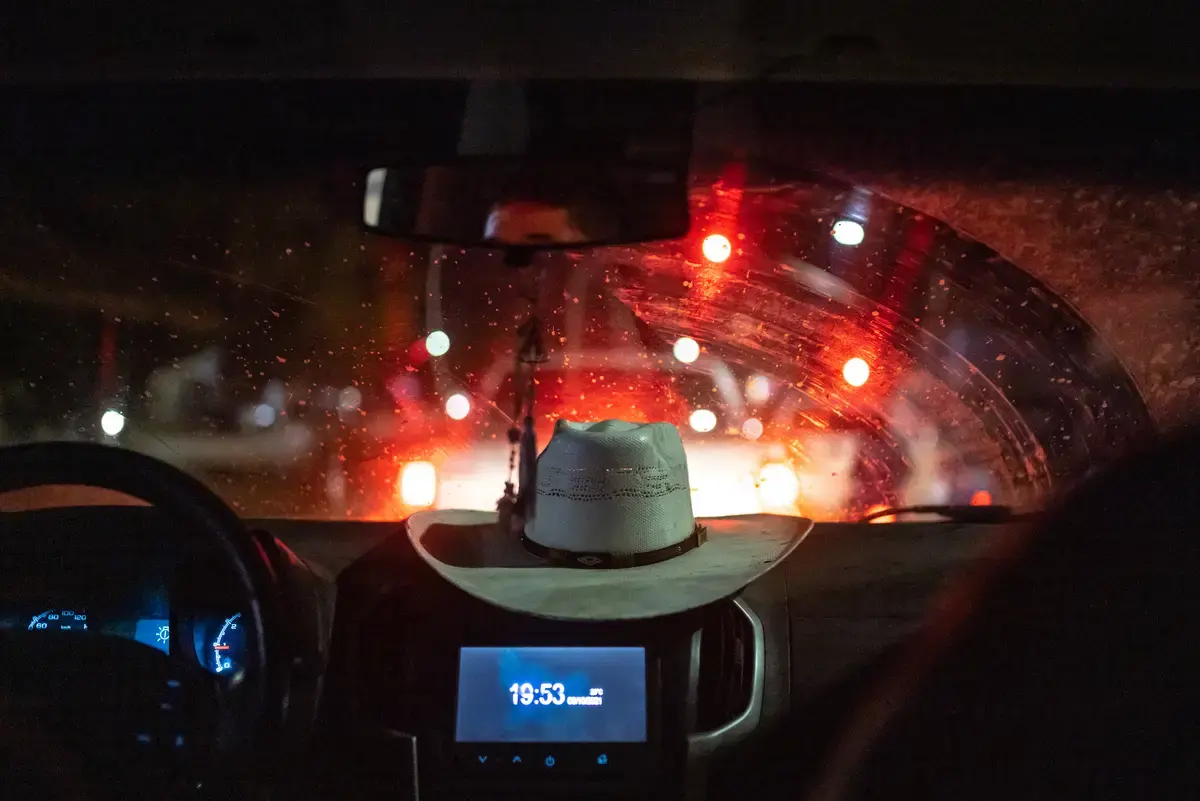

But the municipality that’s as big as Ireland lays claim to a more notorious title too. It’s the deforestation capital of the world. Understanding how Brazil’s beef industry and rainforest destruction are inextricably intertwined reveals a truth that JBS doesn’t acknowledge: As the region’s biggest beef producer, its supply chain is also among the biggest drivers of Amazon deforestation the world has ever known. While marketing itself as a friend of the environment, JBS has snapped up more cattle coming out of the Amazon than any other meatpacker in an industry that’s overwhelmingly to blame for the rainforest’s demise. It has helped push the world’s largest rainforest to a tipping point at which it’s no longer able to clean the Earth’s air, because large swaths now emit more carbon than they absorb. Late last year, at the COP26 climate summit in Glasgow, governments and financial institutions—including JBS investors—made ambitious green commitments to drastically alter their business models to save the environment. With Amazon deforestation at a 15-year high, JBS is a case study illustrating how difficult it is to keep such promises.
For more than a decade, JBS has committed to ridding its supply chain of animals born or raised on deforested land. Bloomberg analyzed about 1 million delivery logs that JBS accidentally posted online to show just how far its footprint has reached into the Amazon in that period. A 10-day trip into the heart of Brazil’s cattle country put on full display how easily and openly cows from illegally cleared land flood supply chains. JBS says it sets the highest standards for its suppliers, but it’s using a greenwashed version of an animal’s origin and working within a legal system so full of loopholes that prosecutors, environmentalists and even ranchers themselves consider it a farce.
Asked to respond to this article, JBS said “it has no tolerance for illegal deforestation.” The São Paulo-based company added that it “has maintained, for over 10 years, a geospatial monitoring system that uses satellite imagery to monitor its suppliers in every biome” in Brazil.
Residents of São Félix do Xingu mark the passage of time the same way city dwellers do—by all that has changed. But instead of talking about what’s gone up—a high rise or a shopping mall—it’s what’s been felled. A few decades ago, it was all rainforest; now, most of what you see driving in is pasture. Hardly any cattle grazed the land; today, more than a million hectares of São Félix jungle have been replaced by the animals. Back then, the world didn’t know of the catastrophic link between beef and deforestation. And then a reluctant rookie prosecutor named Daniel Azeredo landed in the state of Pará, where São Félix is located.
The posting was far from Azeredo’s first choice, but none of his senior colleagues in the federal public prosecutors’ office wanted it. In a nation wracked by violence and corruption, Pará state is particularly lawless. “Put it this way,” the now 40-year-old lawyer says, “When I arrived in 2007, there were some 30,000 to 40,000 individual fires burning across the Amazon each year, and regulators and police had no idea who was responsible.”
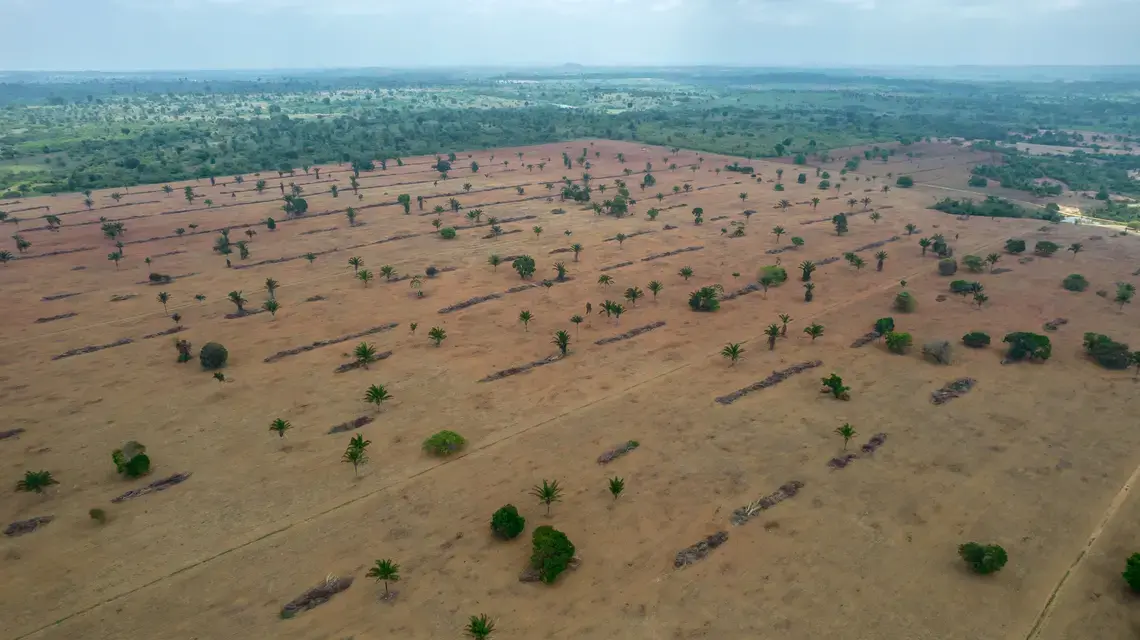
Once he got his boots dirty, he saw that this was the work of the cattle industry. More than 70% of deforested land in the Amazon turns into pasture, the first step in a supply chain that’s among the most complex in the world.
On one end of the Brazilian beef supply chain are 2.5 million ranchers, many in far-flung corners of the Amazon without government offices, schools or even phones. On the other are corporate buyers in 80 countries, including fast-food chains, supermarkets and makers of leather shoes and handbags. “In the middle, you have the slaughterhouses,” Azeredo says. “So I thought: ‘Well, that’s it. That’s who we have to go after.’”
In June 2009, he did. A two-year investigation culminated with federal prosecutors flagging slaughterhouses buying cattle from illegally cleared land. Greenpeace picked up on Azeredo’s work, and issued a landmark report that shifted the world’s understanding of deforestation. The activist group called out global brands for buying beef and leather from a trio of what it said were the Amazon’s worst offenders: JBS, Marfrig Global Foods SA, and Bertin. Corporate clients threatened to boycott if they didn’t clean up their supply chains, and Azeredo’s team drafted a settlement and timeline to get it done.
With no law on Brazil’s books specifically prohibiting the purchase of goods from deforested land, the deal with prosecutors lays out the only guidelines that meatpackers follow in the Amazon—but they’re voluntary and, by Azeredo’s own account, too weak. Growing pressure from investors and customers prompted the big exporters to sign on, but a number of others simply refused and openly buy their animals from wherever they want.
JBS was among the first to sign, in July 2009. But it also aggressively expanded in the Amazon in the years that followed. It bought up rivals, including Bertin to become the world’s biggest leather producer, and drew the scrutiny of prosecutors and environmentalists.
The company has felt unfairly singled out. Four senior executives of the beef behemoth said in interviews over the past year, granted on the condition of anonymity, that laundered cattle shuffled between deforested land and “clean” farms are an industry-wide problem. Given that lots of slaughterhouses didn’t sign the prosecutors’ deal, JBS’s standards are far higher than many, they say. JBS says it checks tens of thousands of ranches daily, and has blocked more than 14,000 supplier farms for not complying with its policies.
“We have been doing this now for over 10 years,” Wesley Batista Filho, head of beef operations in South America, said in a video press conference in late 2020 about the company’s monitoring. “One hundred percent of our suppliers in the biome abide by those criteria, which is to say, zero deforestation,” said Batista, 30, who is the grandson of the founder.
JBS has repeatedly made such statements, but they come with a caveat. The supply chain is broken into two groups: direct suppliers and indirect, and JBS checks only the legality of the former, while knowing next to nothing about the latter, in violation of their agreements. It’s like saying laundered money is clean because the bank that oversees the checking account didn’t commit the crime. Financial institutions aren’t let off the hook so easily; Amazon meatpackers are.
Even some of JBS’s biggest investors seem not to realize the distinction. “We don’t understand the controversy,” said João Carlos Mansur, general director at REAG Investimentos, which is the company’s fourth-biggest investor, with a stake worth 5.66 billion reais ($1 billion). “They already have their whole supply chain mapped, from the origin of the calf to slaughter.”
But cattle in Brazil move on average two or three times and as many as six before they are slaughtered, according to the Gibbs Land Use and Environment Lab at the University of Wisconsin at Madison. JBS systematically monitors only the final ranch or feedlot in a cow’s life.
Ferreira Sandes, the cattle buyer, starts his morning in São Félix do Xingu with a grilled ham-and-cheese sandwich and a phone full of messages. Local ranchers have sent him a dozen videos of cows on offer. He watches the animals trot across his screen, jots down the lots that interest him, then flies across town to a tiny farmstead at the end of a dirt road.
In a small fenced-in lot, 20 cattle await. They’re what’s known in Portuguese as “gados magros,” skinny cows, their ribs visible through flesh so loose that it swings when they walk. Ferreira Sandes closed the deal on the group yesterday for about 70,000 reais. All that’s left now is to brand them. Grunting gutturally—“Oooooy! Hooz-ah! Vaaaai!”—a cattle broker herds the cows single file through a narrow holding pen. Ferreira Sandes plunges a glowing branding iron through the wooden slats. A split second on the hindquarter, a puff of smoke, and a blackened letter T for transport is seared above the animal’s left leg next to half a dozen other markings. Each one represents a different step on its journey so far.
The cows have been at their current home for only a couple of days. The owner of the farm, an ambling man who says his name is Tonico Nogueira, makes a living selling cattle for others. “Every day, there are cows coming and going,” he says. “They arrive, stay for a day or two, and then leave again on a truck.” Way stations and middlemen like Nogueira are key points of contention for environmentalists and researchers who say they are the core of the charade that ensures a steady supply of animals from deforested land. To prove it, activist groups like Greenpeace and researchers from Wisconsin to Belgium pore over hundreds of thousands of so-called GTAs—animal sanitation documents that authorize the transport of cattle—to piece together a cow’s journey as clearly as it’s marked on its hide.
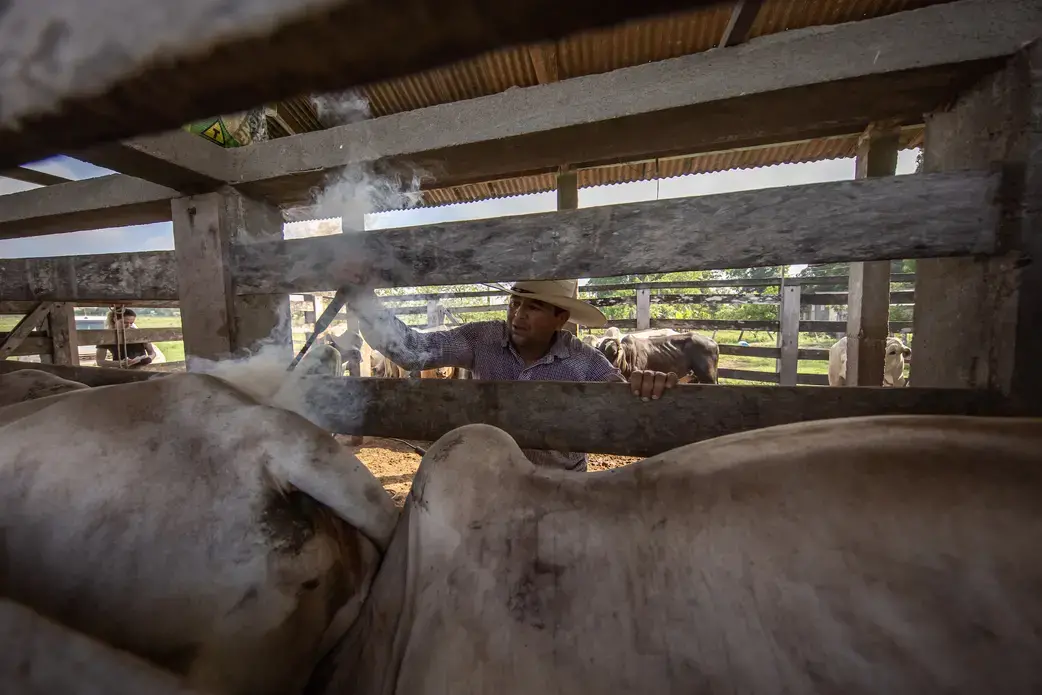
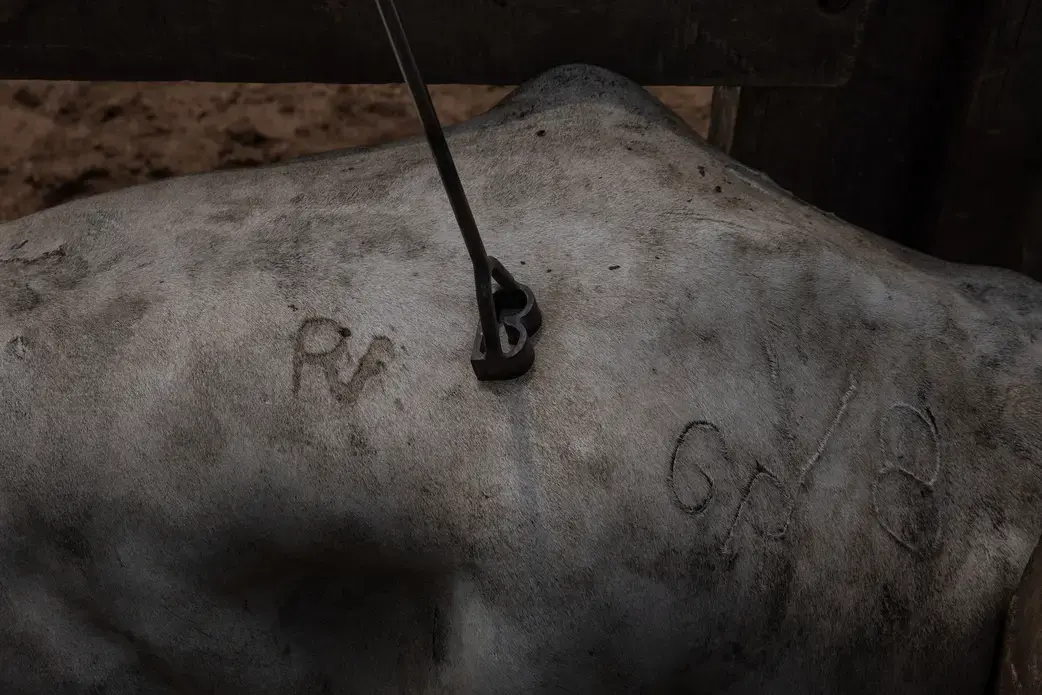
The Brazilian government keeps the documents hidden, citing privacy concerns. A few activist groups have amassed databases through web scrapes that have been running for years using a technique known as brute force to randomly guess alphanumeric identifiers many characters long. Armed with the databases, activists can sometimes connect the dots from a deforested farm where an animal is born to the slaughterhouse where it dies.
Ferreira Sandes doesn’t ask where the cattle have been before he buys them, and says his paperwork is always in order. All he needs is a GTA listing Nogueira’s tiny plot as the origin and Fazenda Lageado, the farm 10 hours to the southeast that Ferreira Sandes works for, as the destination. In a year or two, once the cows have gained half again their bodyweight and their skin has grown taut over the extra meat and fat, another GTA will be issued so they can be shipped to slaughter, and a new origin ranch documented. When Batista Filho said 100% of JBS’s suppliers are deforestation free, he was talking only of this edited version of their voyage.
"It has been brought to our attention that JBS is using (its annual audit) as proof that its total cattle sourcing practices are deforestation free,” says DNV GL, JBS’s former supply chain auditor, in a July 2020 letter to JBS. “Given the fact that there was no tracking of indirect suppliers, JBS cannot use the assessment report as evidence of good practices throughout their total supply chain."
The company said it makes clear in its communications to investors and in public statements that it’s not talking about the full supply chain. “JBS acknowledges that the supply chain checks still do not include indirect suppliers,” it told Bloomberg. In the same press conference where Batista Filho spoke, ‘supplier’s suppliers’ are mentioned on several occasions, the company said.
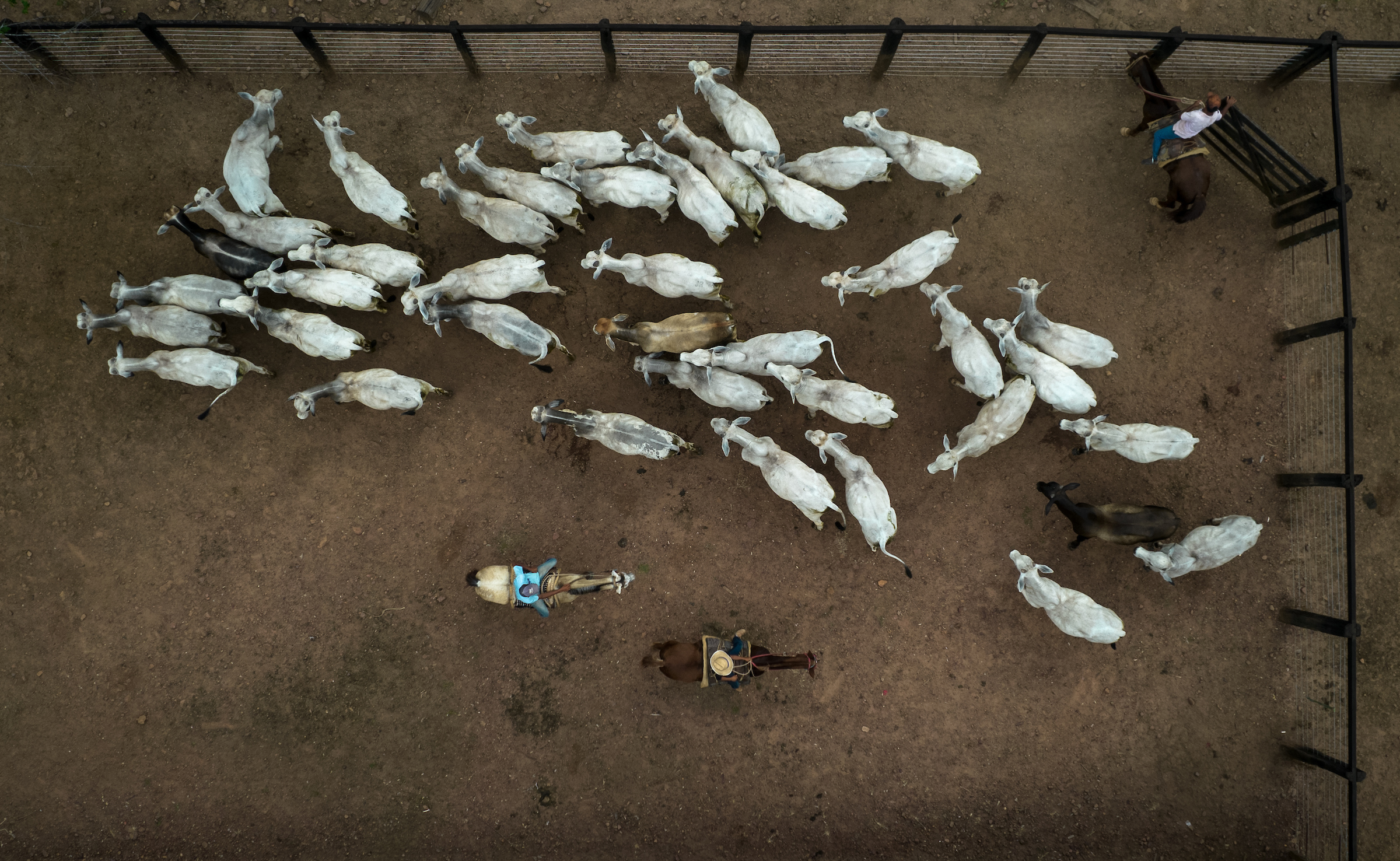
At Nogueira’s lot, the branding is over within half an hour and Ferreira Sandes is back in his truck, crossing a vast river by ferry, driving so fast down dirt roads that the red dust makes it impossible to see too far ahead. By the time his day ends 12 hours later, he will have visited three other ranches, none of which lives up to Brazil’s rules and regulations, according to interviews and a cross check of the properties’ GPS coordinates and public records. One owner has been embargoed by Brazil’s environmental regulator; the second was flagged by the National Institute of Space Research for deforestation. Its manager talked freely about moving cattle to a plot next door to make a sale. The owner of the final ranch, a self-possessed matriarch named Divina, openly doctors vaccination records with the help of a local government official and an animal-supply store clerk before she can get her GTA issued. Side deals, workarounds, hustles—that’s how it’s always been in cattle country, Divina says. “We don’t have government, education or infrastructure here,” she says. “All we have is each other and our ranches, and so we do whatever we need to do to get by.” It’s a sentiment shared by more than a dozen ranchers interviewed during Bloomberg’s journey through the region. But it’s a trip JBS’s supply-chain auditors have never made. “No protocol requires ‘on-site visits to direct suppliers,’” JBS said about its monitoring commitments.
Whether or not any of the cows Ferreira Sandes buys will end up at JBS slaughterhouses is impossible to know. The Lageado farm, like thousands of other direct suppliers in the company’s ecosystem, is a mixing pot. A 2020 study published in Science magazine found that such intermingling means more than half of all beef exports from the region to the European Union may be tainted by deforestation.
Anti-deforestation laws and regulations in Brazil are full of nuance, and JBS is a company that lives in the fine print. Amazon ranch owners are legally allowed to deforest a portion of their properties, and those who go too far in felling old-growth trees can restart cattle sales by appealing or promising to replant. For decades, the government has also turned a blind eye as Amazon land is raided and razed, establishing mechanisms so squatters can legally sell cattle and also pardoning the land-grabbers by granting them property titles. “The big meatpackers are always complaining about having to lead these initiatives, when really the government should lead,” said Azeredo, the federal prosecutor. He said cattle tagging at birth would be the closest thing to a silver bullet and wouldn’t cost much, but both companies and the government have resisted such a plan. “I would love to force it,” Azeredo said, “but, since there’s no law, I can’t.”
JBS said it follows the rules for direct suppliers scrupulously and is quick to argue that many headline-making claims against it aren’t actually illegal. But when every case can be so easily defended by Brazilian law, the broader question arises whether a meatpacker as big as JBS, operating in a region as lawless as Brazil’s North, can ever claim in good faith that its supply chain is anywhere close to free from deforestation.
Vemund Olsen, senior sustainability analyst at Storebrand Asset Management, which has more than $100 billion under management and held JBS shares until the company was embroiled in a corruption scandal in 2018, said no. “Every year, reports come out that document cattle from deforested land making their way into JBS’s supply chain,” he said. “They shouldn’t need the media or the NGOs to do that work for them.”
Customers and investors are increasingly signaling they’re not comfortable with the Amazon footprint of Brazil’s biggest meatpackers, even if it does fall mostly within the law. In December, European retail chains Sainsbury’s and Carrefour said they would restrict beef purchases from Brazil because of links to deforestation.
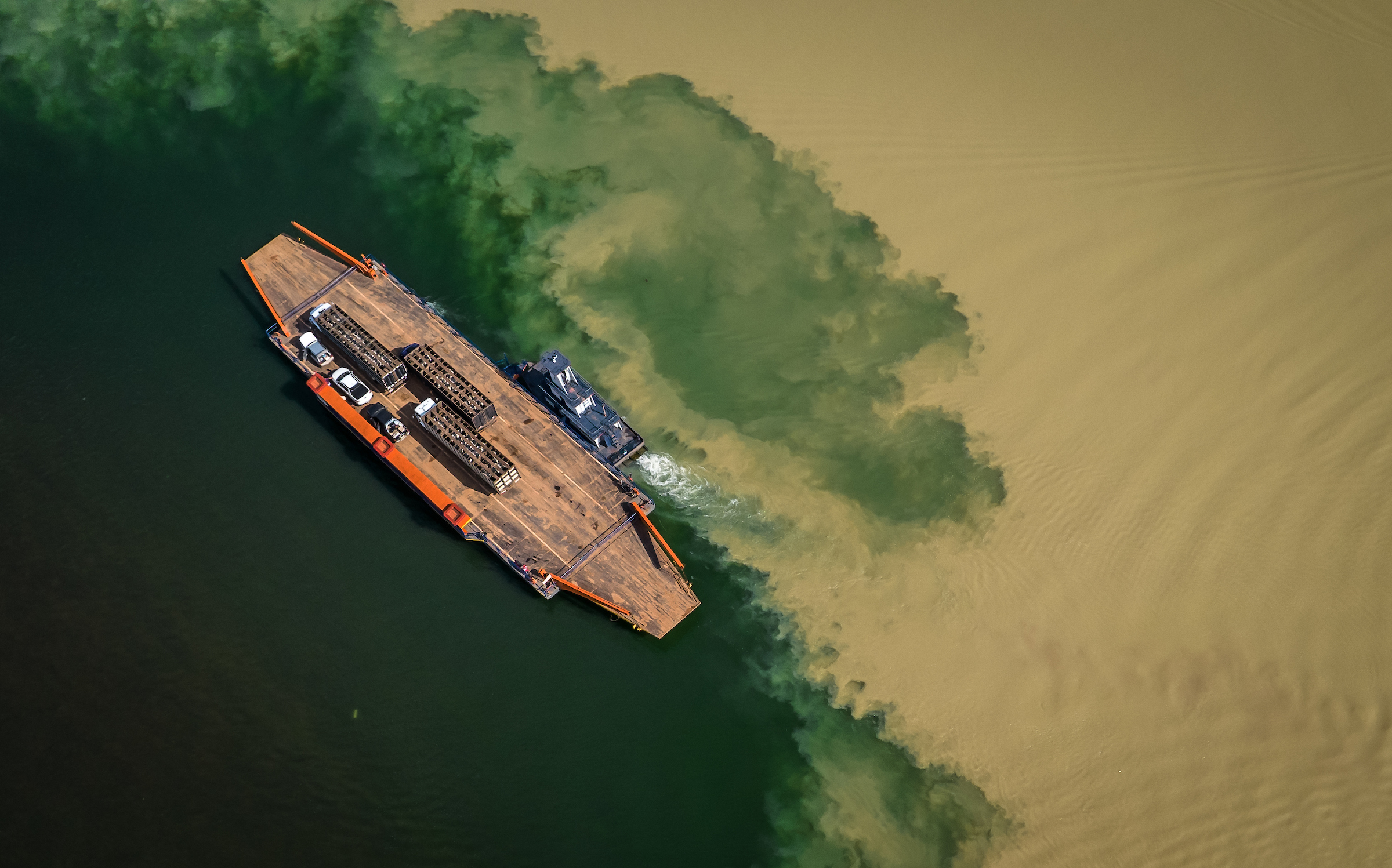
Late in 2020, JBS again vowed to track the full chain of indirect suppliers, this time using an app built on blockchain technology to log the GTA transport documents. Financial analysts and some investors praised the move. “When they elect something as a top priority, they deliver,” Pedro Leduc, head of research at BLP Asset, said at the time. But to longtime Amazon watchers like Azeredo and environmentalists, it sounded an awful lot like the promises the beef giant made a decade prior.
On a muggy afternoon in early October, some of Pará state’s biggest ranchers gather at an expo park for a four-day fair of industry panels, music, and a cattle auction. In a small booth sandwiched between sellers of farm equipment, Lorena Geyer, a JBS sustainability analyst, prepares a presentation about JBS’s monitoring initiatives. Geyer, 27, runs a JBS Green Office. Like the company’s auditors, she’s never made the trek for the meatpacker across cattle country to talk to ranchers on their farms. Neither have JBS’s nine other Green Office analysts in the Amazon, who are scattered about a region bigger than continental Europe. Instead, they sit next to cattle buyers at a desk inside a JBS slaughterhouse. Every time a rancher walks into a slaughterhouse to sell cattle, JBS buyers check their property against deforestation records issued by government agencies. When a rancher doesn’t make the cut, Geyer steps in to help them figure out how to get off government blacklists so they can start selling legally. “JBS’s approach is to include suppliers and not exclude them,” she tells ranchers at the expo park, adding that JBS can give them support to get their documentation in order. “It’s also in our best interest to have you in our supply chain—we need that raw material.”
Legalizing suppliers by helping them file paperwork is at the crux of JBS’s strategy to clean up its supply chain. That’s not the same as eliminating deforestation. “Consumers and governments coming together don’t want zero illegality—they want zero deforestation,” said Holly Gibbs, who runs the land-use lab at the University of Wisconsin. “There’s a big difference.”


